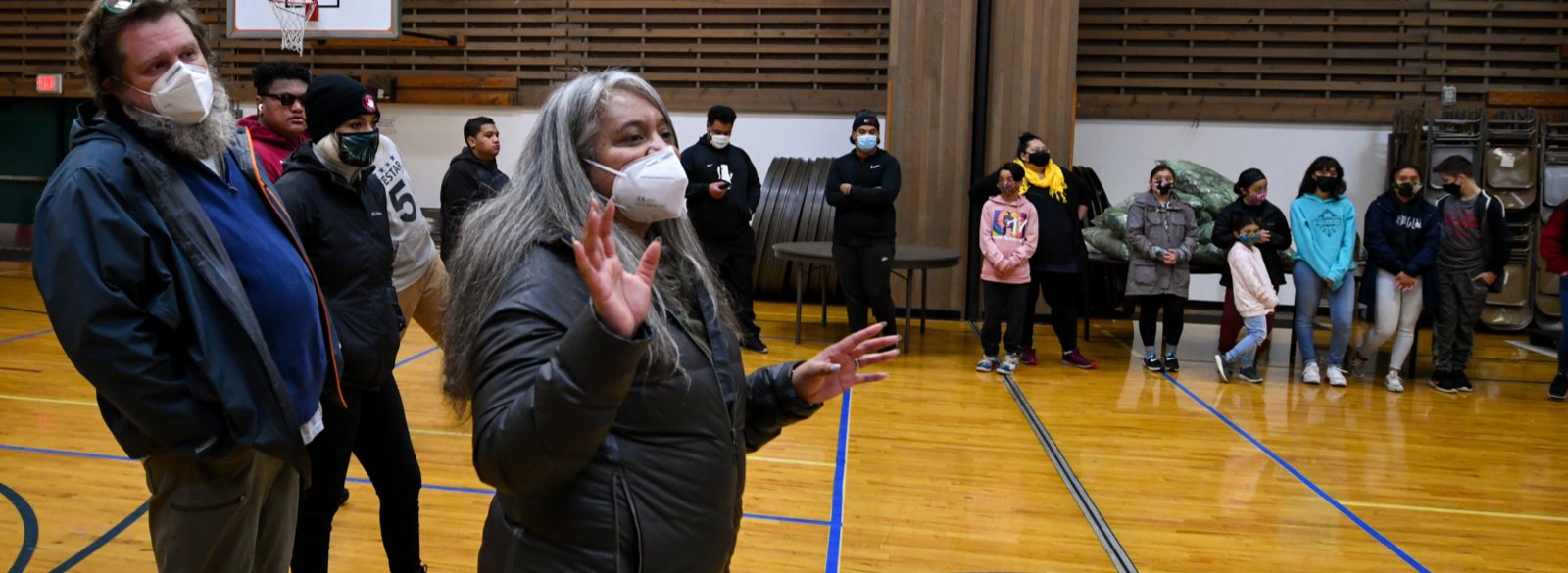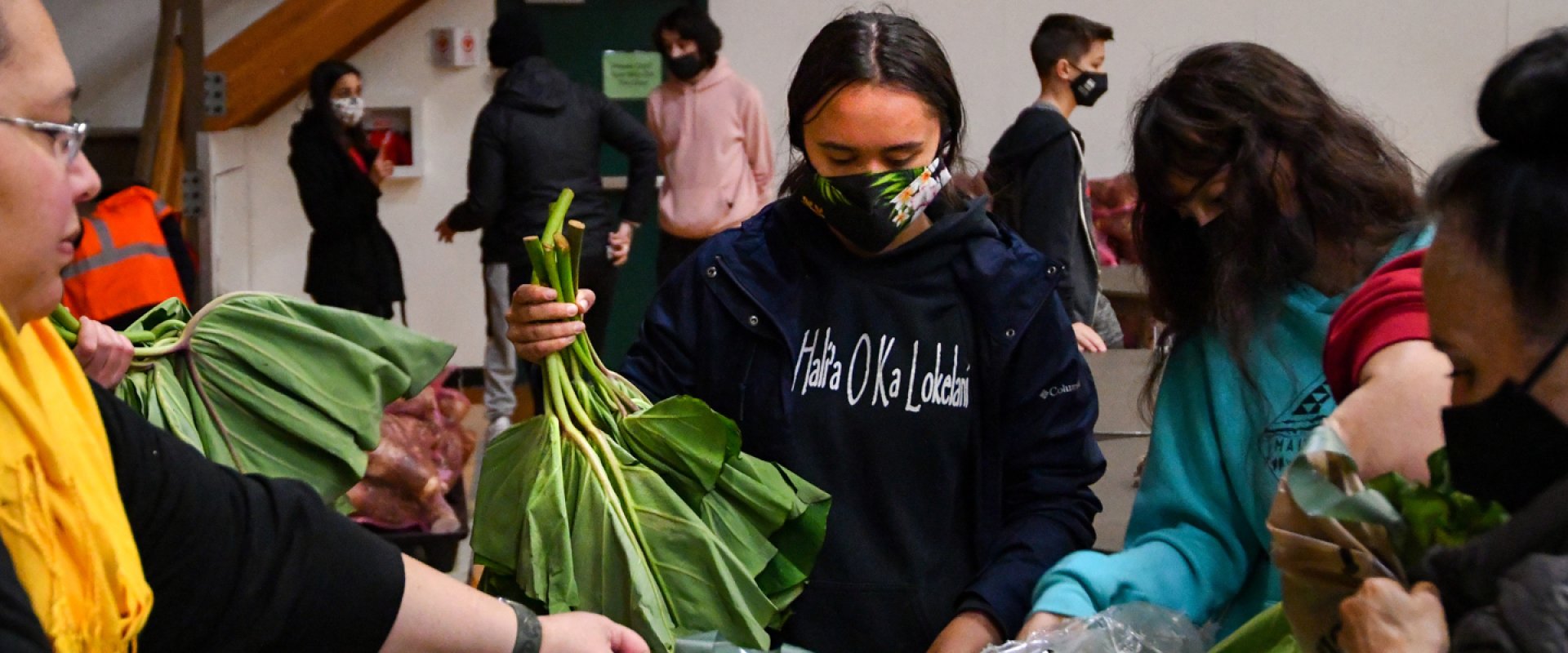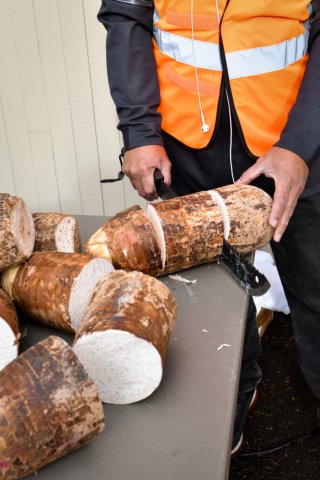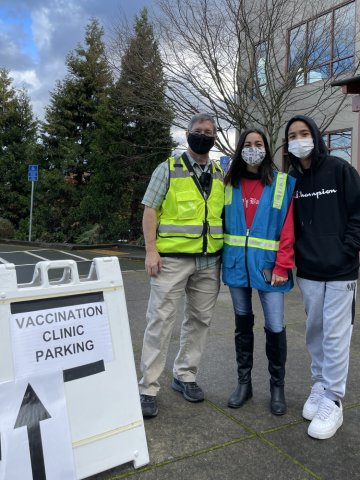Tuesday, Apr. 26, 2022
Cultural relevancy is a term we use regularly at United Way of the Columbia-Willamette. But it can be hard to pin down a universal definition of the phrase, and difficult to understand the tangible effects of implementing cultural relevancy in community work. But that work is immeasurably more effective when done through the lens of cultural understanding. Living Islands, and their intrepid work throughout the COVID-19 pandemic, is a perfect example to show how cultural relevancy can be implemented in a transformational way. Living Islands is a non-profit dedicated to expanding the resources offered and representation of Pacific Islanders in Oregon. Founded in 2013 by Kianna Juda Angelo and her team, the nonprofit started its work with a much more specific lens, seeking to serve Micronesian peoples across the world. Due to the stresses of COVID and the need for culturally relevant communicators, however, the group expanded their services to include those from Polynesian and Melanesian backgrounds.
“The pandemic is a blessing and a curse. We’ve taken some of the worst parts of it and turned them into something positive,” Angelo said. “Our mission focuses on Micronesian communities, but because of the pandemic we’ve opened our doors to all Pacific Islanders, trying to fill in the gaps as much as possible through our story telling, relationship building and working with the state of Oregon. To understand the need for us to expand into this space, you have to first understand how wrong the state’s messaging on COVID was.”
Kianna stresses how the messaging on COVID precautions was received by those in diverse communities. Though much of the work done by organizations like Oregon Health Authority was integral to keep Oregonians safe throughout the pandemic, Kianna believes the addition of culturally relevant community-based organizations can only amplify and augment that work. Cultural ties run deep and how we communicate with a suburban Caucasian family can be quite different than communicating with a suburban minority family, leading to vastly different interpretations of something seemingly simple like the message to stay home and only see your family. The ability to repackage the information gathered by state-led organizations into accessible, culturally specific forms is a necessity for efficient and effective communication.
Saying ‘Stay in your home with your families,’ to a Pacific Islander can look very different. Our families are everywhere. Our families are in different homes and counties. Our families are not just mom, dad, son and daughter. They’re cousins, aunties, elders, friends. People just didn’t know how to live without seeing their families.
"Saying ‘Stay in your home with your families,’ to a Pacific Islander can look very different. Our families are everywhere,” Angelo said. “Our families are in different homes and counties. Our families are not just mom, dad, son and daughter. They’re cousins, aunties, elders, friends. People just didn’t know how to live without seeing their families.”
Living Islands was quickly brought into the decision-making process to assist counties across the state in messaging to Pacific Islanders. They began producing social media posts and videos in both English and in an accessible language for their community, amplifying the necessity for Pacific Islanders to limit their social interactions to help flatten the curve of infections. The group translates and produces content in a myriad of languages: Micronesian languages like Marshallese, Chuukese, Palauan and Polynesian languages like Samoan, Tongan as well as into Spanish and Filipino languages. They provided translation services at COVID-19 testing sites, and worked as a liaison between communities and local and state agencies. Living Islands also worked alongside other Pacific Islander organizations to amplify projects such as the Pacific Islander Coalition’s COVID-19 Response Team, a combination effort of national Pacific Islander organizations working to disseminate information in an accessible way to help people stay safe.
“I felt responsible that I couldn’t just target one region, one group,” Angelo said. “We are all Pacific Islanders. We have so many differences between countries, but also share so much in common like family, traditions and food. Before the pandemic, it was much easier to stay isolated from each other, between our cultures. But Pacific Islanders were aligned in their response to the pandemic and needed help they would understand.”
In expanding their services to meet this new need, Angelo and her team leaned heavily on the trust of community leaders they had worked with in the past, and word of mouth spreading through communities that they were able to help. As the state ramped up programs to assist with the economic fallout of COVID-19, Angelo and her team were looking at increased funding based on the important work they were doing and figuring out the best way to utilize it. Rather than accepting gift cards to local grocers, Living Islands thought creatively and instead pulled together a drive-thru, culturally focused food bank.
“Our first food drive was conceived to give people hope when they couldn’t be with their extended family,” Angelo said. “We explained that family during the pandemic meant only the people in their house. We acknowledged that being quarantined was really hard and that the lack of mobility was an emotional draw on our people. So, we wanted to comfort them with things they love. I wanted to make sure there was reef fish, coconut, taro – all the things they were missing.”
Living Islands held multiple of these food drives, ensuring Pacific Islander families had food that reminded them of their family and culture during holidays. Angelo said there was so much emotion during the drive-thru events, people crying and gratitude abounding.
“It brought a lot of people the sense that there was still a community here,” Angelo said.

Kianna speaks to a room of Living Islands volunteers at an event during the pandemic.
As the pandemic wore on, Living Islands continued to innovate in their outreach. They combined a love of music and dance with educational videos and events to help fight the fatigue of isolation and social distancing. These different kinds of events were conceived by and for Pacific Islanders, with messaging that was more effective and resonated better with the community at large.
“With these events, we create a space that is known to our people, a space they can express who they are and celebrate their culture. With that celebration comes acceptance and a chance to learn,” Angelo said.
Ultimately, the success of Living Islands’ outreach was recognized by the Oregon Health Authority, who chose them to speak at a CDC Foundation event. The team was asked to speak about their success in relationship building and cross-cultural outreach to a Zoom call of about 565 community leaders across the nation. This, along with the hard work Living Islands has done at the county and state level, has helped the nonprofit build a strong network of connections with leaders and communities nationwide. More than anything, it’s those relationships that have been the biggest benefit of their culturally relevant work.
“The relationships we've made, we’ve never had this many partnerships with other counties, corporations, community-based organizations and people,” Angelo said. “That has been one of the bright spots throughout all of this.”
To learn more about Living Islands and the work they do, visit their website here.



